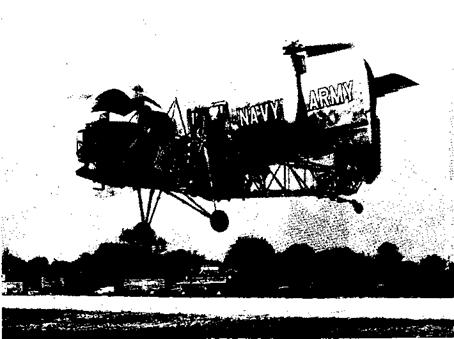Tilt-Wing
A tilt-wing aircraft derives its high lift by rotating the entire wing and propellers, mounted on the wing, through approximately 90° while keeping the fuselage horizontal. The major portion of the wing, submerged in the propeller slipstream, does not stall throughout a major part of the flight
|
Fig. 1-3. The first successful tilt-wing aircraft, the Vertol 76. (Vertol Div., The Boeing Co.) |
regime. The Vertol 76, shown in Fig. 1-3, a flying test bed, was the first successful aircraft of this type to undergo transition.
Tilting Jets, Ducted Propellers, or Rotors
These three types are given together because the principle of rotating the thrust producer, is the same for each of them. They vary only in the degree of their disk loadings, hence in their jet velocities. For this type of aircraft only the thrust producer rotates; the aircraft fuselage and wing remains horizontal. The rotating thrust producers can be attached to the fuselage or mounted at the wing tips as shown in Fig. 1-4.
|
Fig. 1-4. The Bell XV-3, a tilting-rotor VTOL aircraft. (Textron’s Bell Helicopter Co.) |
Deflected Slipstream (vectored slipstream)
In a deflected slipstream system lift is produced at low speed by deflecting the propeller slipstream downward in a wing-flap system. The earliest of what might be termed STOL aircraft, the Crouch-Bolas Dragonfly I, flown in 1934, operated on this principle. Two opposite-rotating 9-ft-diameter propellers powered with 90 hp engines gave this 2100-lb, 26-ft span biplane exceptional short-field performance. It had a ground run of 30 ft, an angle of climb of 50°, and an angle of descent of 70°. Descent was made nose high with power [2].













